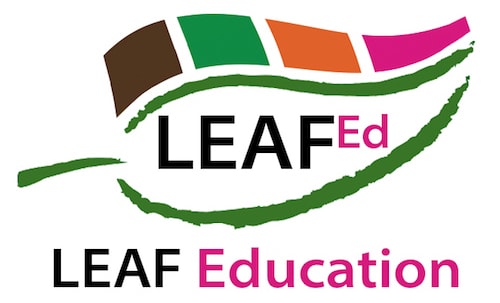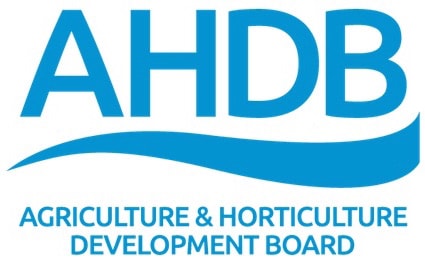Building a case for support
Before you start fundraising it is vital that you think about what you are trying to achieve and the impact that work will have. This is the most important part of fundraising strategy - the need to communicate as clearly and simply as possible what you need the money for, how much you need and what impact it will have. A case statement sits on the centre of the fundraising strategy. Consider these questions:
• What is the need?
• What evidence is there that this is a pressing need?
• How is our organisation uniquely placed to tackle this?
• What will the benefits of action be?
• What will be the negative consequences if we fail?
Make sure your case statement can be understood by all your stakeholders - parents, children, staff and the community - the more simple and concise the better. Make sure it is memorable and strip out any hype. CLOtC can also help with training or consultancy to help you fundraise. Contact [email protected] for more information.
Making a case for LOtC
When fundraising for LOtC - whether you are a school, setting, youth organisation or provider of LOtC - consider the benefits of learning outside the classroom and the research that exists to back that up. Consider the following:
Educational benefits: raising attainment, improving behaviour, reducing truancy or engaging children with different needs or learning styles
Health benefits: improving physical health, healthy eating, developing motor skills, reducing obesity and promoting mental well-being
Environmental benefits: teaching children to value and appreciate nature and enabling them to experience the countryside and explore the great outdoors
Cultural benefits: introducing children to their heritage and culture, cultivating an appreciation of the arts and teaching children to understand different cultures- challenging attitudes and values
Societal benefits: Tackling social mobility, addressing inequality, decreasing anti-social behaviour, encouraging citizenship
Economic benefits: equipping young people with the skills they need for real life and employment, shaping a fit and motivated workforce, raising aspirations, promoting economic growth
Personal, social and emotional benefits: raising self esteem, teaching children how to manage risk in a controlled environment, giving children hands-on experiences to equip them for life, encouraging children and their families to seek new experiences
The emphasis you give the above benefits in your case for support will depend on your organisation and your objectives, but also the interests of the funder.
Where can we find funding for LOtC?
Statutory
The financial climate means less statutory funding at both a local and national level, but there are still funding pots available. For example, some schools have used gifted and talented funding pots to support LOtC. Be prepared to ‘think outside the box’. Think about whole budget planning - will spending money on LOtC have as much impact on learning as spending the same amount on purchasing more computers? The Pupil Premium is to support the learning of disadvantaged children - could it be used to fund LOtC for less well off students for example? Schools should remember that LOtC needn’t be expensive. The best LOtC provision makes the most of the opportunities in the school grounds or local area and aims to get children out and about on a regular basis - aiming for frequent, continuous and progressive LOtC integrated across the curriculum.
Charitable Trusts and Foundations
Many (although by no means not all) charitable trusts are ‘postcode funders’ who like to fund people with certain demographics, e.g. deprived areas, specific locations, SEN. There are hundreds of charitable trusts who like to fund educational activities. They are unlikely to fund a one-off visit but may fund a project to help disadvantaged young people (for example) through a project aimed at integrating LOtC across the whole school curriculum. Trusts and foundations like innovative projects with clear objectives that will be evaluated for effectiveness. Consider subscribing to funding newsletters - www.fundraisingschools.co.uk (subscription) or www.fundingcentral.org.uk (free). To find funders use funding directories in libraries e.g. DSC The Guide to the Major Trusts.
Corporate funders/sponsors
Many businesses, large and small, like to support their local communities as part as their CSR (Corporate Social Responsibility) policies. Many encourage their staff to volunteer or fundraise for local causes and this is something you may be able to tap into. Think about who you may have links with - consider any major employers in your area, employers of the parents in your school or any organisations you have a previous relationship with. Using parents who work for the company to make the approach is often more effective then calling an organisation cold. Who do your governors or board know/work for? Supermarkets – Co-op, Tesco etc. have funding schemes that schools can apply for, and some companies may be particularly warm to LOtC e.g. those who like to encourage children to get outside, get active or have more cultural experience.
Individual donors
Membership, appeals, donations, major donors and legacies are all sources of funds from individual donors. Certain schools or organisations may find there is more scope for raising funds from individual donors than others. In the case of schools, those with more affluent parents/past pupils or faith schools may have more opportunity for raising funds from individuals. However, even schools in the poorest areas may find they are able to raise funds from individuals in the local community. Past pupils often hold affection and gratitude for their old school, and this is a powerful motivator for giving. Consider setting up a ‘friends of’ group, send an appeal out to the local community or set up a 100 Club or lottery targeting local people. Think about who you know - who from the local community is involved in the school, can you involve your local place of worship, do you have any wealthy or influential contacts, board members, governors parents or past pupils?
Fundraising events
Most schools have a PTA but are you using them as effectively as you could? Have a clear goal in mind and share your vision with the PTA. Being clear about what you need funds for, how much you need, how the money will be spent and most importantly how it will benefit the children in the school will motivate the PTA. Thanking them and letting them know how the funds have helped after six months/a year will also help build a productive relationship.
Earned income
Does your school or organisation have any marketable ‘products’ that can raise income? Many schools generate their own income streams through hire of the hall, hiring meeting rooms, consultancy or providing LOtC opportunities for other schools.
Bursaries or awards from providers of LOtC
Some providers (e.g. the Outward Bound Trust) part fund or wholly fund LOtC for disadvantaged pupils. Others (e.g. World Challenge, Camps International) encourage students to fundraise for expeditions overseas.
Planning and research
The first step is to think about your school or organisation’s demographics and strengths to identify best potential funding options. Do a SWOT and PEST analysis and a competitor analysis with the board of governors/directors/trustees or management team. You can then use this information to identify where to prioritise your fundraising efforts (trusts, corporate, individuals etc) and who to approach first.
Start with who you know - people/groups from the community with a relationship with the school:
- School governors contacts
- Wealthy/influential past pupils
- Employers of parents
Be realistic - you can’t do it all! Decide on your priorities and stick to them. Also remember that there are 1000’s of charitable trusts that fund education - recognise when to stop researching and start asking.
Making the ask
A good proposal structure should be no more than two pages long and should include the following:
• Summary (20% of page 1) Summary of the project, its aims and objectives
• Introduction (20% of page 1) Short summary of your organisation, who you are, what you do and your track record
• Problem (60% of page 1) Why would not achieving your vision be a problem?
• Solution (60% of page 2) How will your project/ organisation resolve the problem you have set out on page 1. How are you uniquely placed to offer the solution
• Evaluation (15% of page 2) What success looks like and how it will be measured
• Budget (25% of page 2) Ask for specific amount of money, break it down as much as possible and don’t ask for round amounts as it looks like you haven’t worked out your figures accurately
This basic structure can be adapted for all audiences. In this form it is good for trusts and foundations or corporates, but the next stage is to condense it to 150 words to communicate with parents and community stakeholders.
Tips on writing good proposals:
• Use simple language (that a nine-year old could understand)
• Use active language
• Keep it short
• Keep sentences short
• Make it memorable- stand out from the crowd
• Target it to the funder
• Spell names etc correctly
Finally, remember that the easiest way to fail is not to make the ask. Good luck with your fundraising efforts!
















